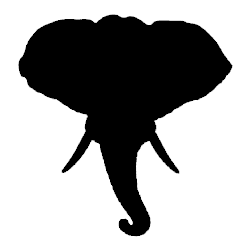THAILAND
While steps to restrict its domestic legal ivory trade are welcome, Thailand’s legislation continues to have major gaps and the country plays a key role as a transit point in organised large scale ivory trafficking.



Is there a need to revise the existing NIAP or develop a new one? ‘YES‘

BEST PRACTICE
The African elephant was the first non-native species listed as a protected species in the Ministerial Regulation under The Wild Animal Reservation and Protection Act (No.3) B.E. 2557 (2014).
The ETIS report to CoP17 noted a positive shift since 2012, leading to a change in status from Category A to Category B. Thailand has implemented new legislation partially closing the domestic ivory market, increased enforcement on the ground which has reduced the number of shops selling ivory and focused on a country-wide registration of ivory. These efforts have significantly reduced the open presence of ivory in Thailand’s markets.
There has been good international collaboration with enforcement agencies in coordination with the Lusaka Agreement Task Force (LATF) resulting in arrests in the DRC and Congo connected with 3.9 tonnes of ivory.
Despite this good progress, concerns remain that warrant Thailand’s continued participation in the NIAP process. Further, the ETIS report to CoP17 notes that Thailand did not report any large-scale seizures in Thailand between 2012-14, yet in 2015 Thailand made at least three large-scale ivory seizures, totalling nearly eight tonnes.
KEY CONCERNS
Large-scale seizures, no convictions
Since 2010, Thailand has made at least 36 ivory seizures, including eight large-scale seizures amounting to a total of at least 17,873kgs, which is roughly equivalent to ivory sourced from approximately 2,667 elephants. In addition, Thailand has been linked to at least 15 ivory seizures in other countries. Based on publicly available information, it appears there have been no convictions for any ivory offences in relation to large-scale seizures within Thailand. Further concerns have also been raised about the security of Thailand’s ivory stockpile.
Trade in ivory from domesticated Asian elephants is a loophole
Ivory harvested from registered domesticated Asian elephants can be traded legally. Following the enactment of the Elephant Ivory Act B.E. 2558 (2015), as at 2017 528,809kg of ivory had been registered, mainly by people registering family-owned ivory passed down over generations. However, it has been calculated that only about 559kg of ivory can be produced from domesticated elephants each year, from which it can be inferred that a significant percentage of the registered ivory in Thailand probably came from Africa. In addition, 559kg per year is not enough to satisfy the current domestic market, thereby inviting the illegal import of ivory from Africa. There are therefore concerns that the continued legal trade in ivory from domesticated Asian elephants could allow illegal African ivory to be laundered through the system.
The current position is very confusing and invites criminal behaviour, particularly by tourists. It is legal to buy ivory but it is illegal to take it out of the country (without a CITES export permit). Tourists break the law when they take ivory out of Thailand and when they enter their own country.
The Government has established a committee to assess how to deal with ivory from domesticated Asian elephants, which includes NGO representation. The long tradition of domesticated elephant ownership makes it a complex issue but in our view the only viable long-term solution is to end all trade including in ivory from domesticated elephants.
Thai traders offloading ivory stocks into Laos
Thai traders have been observed offloading their stocks of ivory into neighbouring Laos, compounding Laos’ problematic status as a major wildlife trafficking hub in the region. EIA has also documented illegal ivory available for sale in the Golden Triangle Special Economic Zone (GTSEZ) in Laos where traders stated that ivory carved in Thailand was smuggled into Laos. There is also concern that ivory from Thailand has been moved to Myanmar.
Barriers for international co-operation
A regulation issued by the Ministry of Commerce banning the export of elephant parts has been interpreted widely to also prohibit any movement of seized ivory for law enforcement to secure prosecutions in other relevant countries (such as source or transit countries). For example, there was a lack of effective co-operation between Thailand and Kenya following Kenya’s formal request for mutual legal assistance to obtain samples from three tonnes of ivory sent from Kenya and seized in Thailand in 2015.
Inadequate NIAP
Thailand’s NIAP from May 2013 focused principally on legislative amendments and changes to the ivory registration scheme and contains no specific objectives for enhancing law enforcement, whether by increasing levels of prosecutions domestically or through improving international collaboration.
RECOMMENDATIONS FOR NIAP REVISION / PRIORITY AREAS OF IMPLEMENTATION:
- Strengthen investigations to ensure prosecutions and to report on status of prosecutions related to all ivory seizures made in Thailand including large-scale seizures
- Prohibit all commercial ivory trade including ivory from domesticated Asian elephants
- Amend relevant legislation to increase the penalty for trans-shipment of illegal wildlife through Thailand to at least four years’ imprisonment
- Strengthen collaboration with relevant ASEAN countries, particularly Laos, Myanmar and Vietnam, to investigate and prosecute networks involved in cross-border ivory and other wildlife trafficking
- Revise the regulation by the Ministry of Commerce on the export of all elephant parts in order to allow movement of seized African elephant ivory to assist in prosecution in the countries of origin
- Conduct an audit of seized ivory stocks and dispose of ivory that is no longer required for law enforcement
Key indicators of NIAP progress
